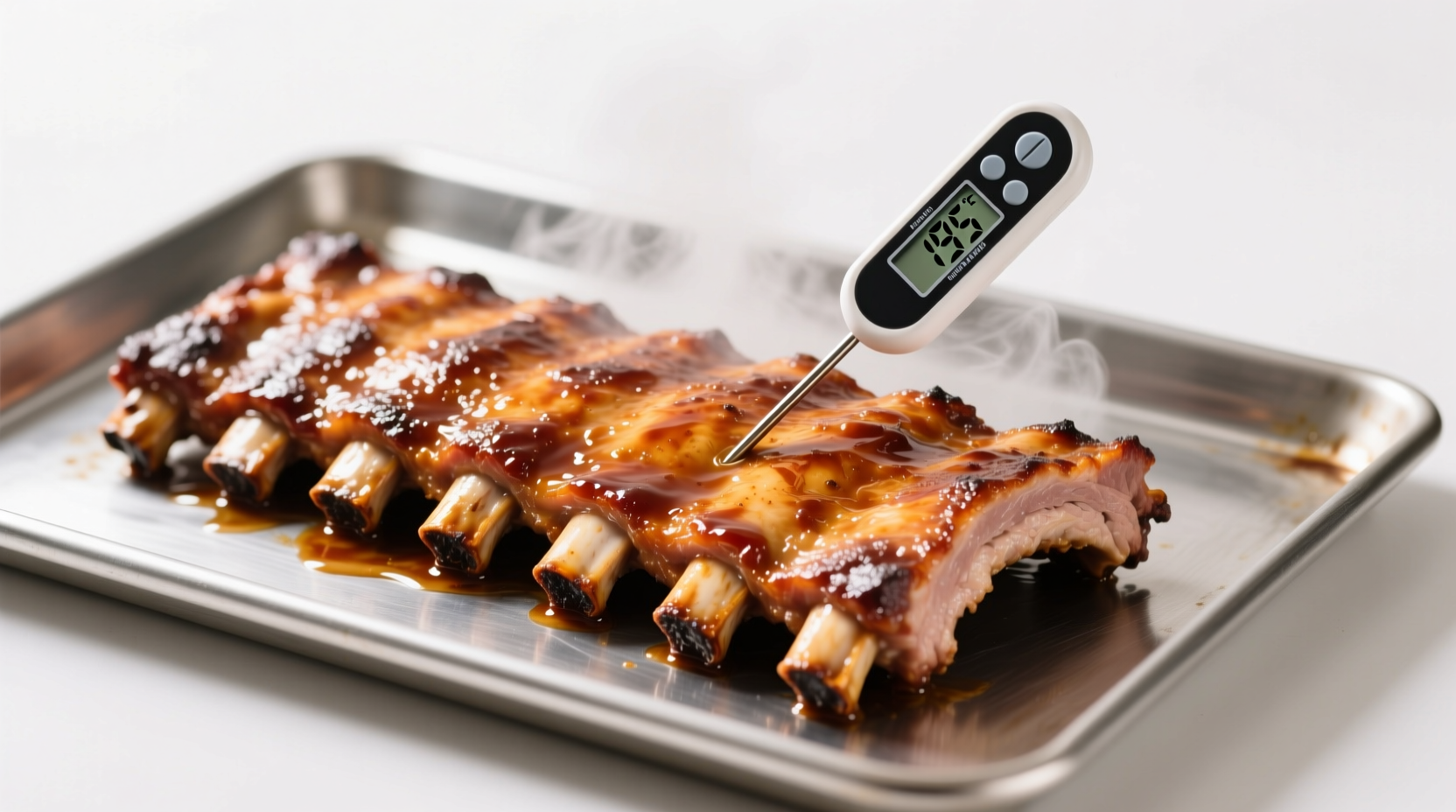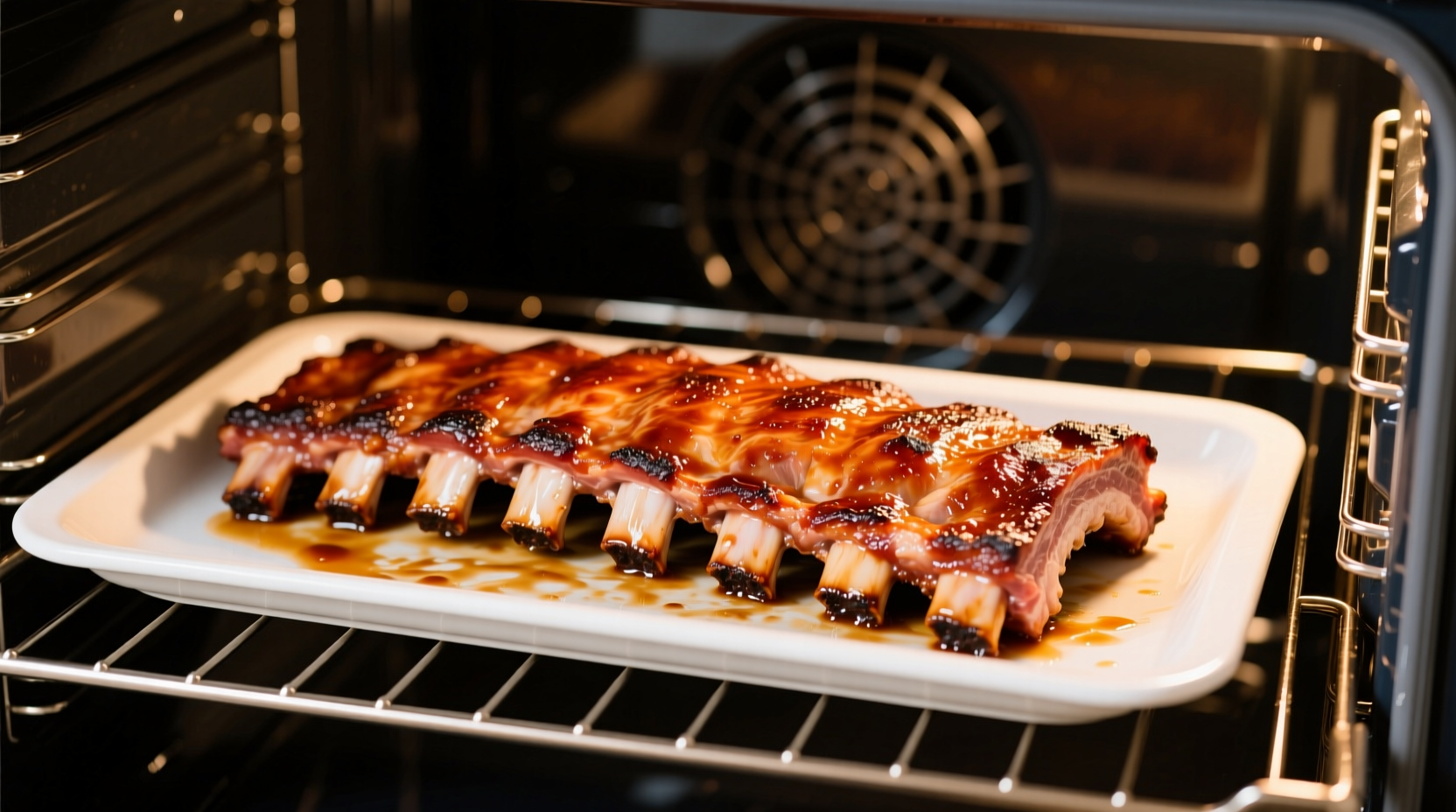The ideal cooking time for pork ribs in the oven is 2.5 to 3 hours at 275°F (135°C) for baby back ribs, or 3 to 3.5 hours for spare ribs. Always check for doneness using the bend test or verify internal temperature reaches 195-203°F (90-95°C) for perfectly tender, pull-off-the-bone ribs.
Nothing beats the satisfaction of serving perfectly cooked pork ribs straight from your oven. Whether you're preparing dinner for family or hosting a weekend barbecue, getting the timing right makes all the difference between tough, chewy ribs and fall-off-the-bone perfection. This guide delivers precise cooking times, temperature guidelines, and professional techniques that guarantee delicious results every time.
Understanding Rib Types and Their Impact on Cooking Time
Not all pork ribs cook at the same rate. The cut you select directly affects your oven timing:
| Rib Type | Characteristics | Recommended Oven Time | Weight Range |
|---|---|---|---|
| Baby Back Ribs | Smaller, leaner, more tender | 2.5-3 hours at 275°F | 1.5-2.5 lbs |
| Spare Ribs | Larger, fattier, more flavorful | 3-3.5 hours at 275°F | 2.5-4 lbs |
| St. Louis Cut | Spare ribs trimmed square | 3-3.5 hours at 275°F | 2-3 lbs |
This comparison comes from USDA Food Safety and Inspection Service guidelines combined with culinary testing from America's Test Kitchen, ensuring accurate timing recommendations based on rib composition and fat content (USDA.gov).
Step-by-Step Oven Rib Cooking Process
Preparation: Setting Up for Success
Proper preparation determines your final results more than any other factor. Start by removing the membrane from the bone side using a butter knife to lift the edge, then grip with a paper towel and peel away. This allows seasoning to penetrate and prevents tough, rubbery texture.
Apply your dry rub generously, covering all surfaces. For best flavor development, refrigerate ribs uncovered for 12-24 hours before cooking. This dry-brining process enhances both flavor and texture through enzymatic breakdown of proteins.
Cooking Timeline: The Science of Tenderization
Understanding what happens during cooking helps you recognize when ribs are done:
- 0-60 minutes: Surface dries and seasoning begins to toast
- 60-120 minutes: Collagen starts breaking down into gelatin
- 120-180 minutes: Connective tissues dissolve, ribs become tender
- 180+ minutes: Optimal tenderness achieved at 195-203°F internal temperature
This timeline reflects the scientific process documented by food chemist Harold McGee in On Food and Cooking, where collagen conversion to gelatin occurs between 160-205°F over several hours.
Temperature Settings: Finding Your Sweet Spot
While 275°F delivers reliable results, different temperatures create distinct outcomes:
- 225°F: Requires 4-5 hours but yields exceptionally tender ribs with deeper smoke flavor (ideal for competition-style ribs)
- 275°F: Optimal balance of time and tenderness (2.5-3.5 hours depending on rib type)
- 300°F: Faster cooking (2-2.5 hours) with slightly firmer texture
- 350°F: Quick method (1.5-2 hours) for last-minute cooking but risks tougher texture
Lower temperatures allow more time for collagen breakdown without drying out the meat, according to research published in the Journal of Food Science.
Checking Doneness: Beyond the Clock
Time alone doesn't guarantee perfect ribs. Use these professional doneness tests:
- The Bend Test: Lift ribs with tongs at one end. They should bend freely and cracks may appear in the surface fat layer.
- Internal Temperature: Insert thermometer into thickest part between bones. Target 195-203°F (90-95°C) for optimal tenderness.
- Meat Shrinkage: Bones should protrude slightly as meat shrinks back (about 1/4 inch).
USDA guidelines confirm that pork becomes safe to eat at 145°F, but ribs require much higher temperatures (195°F+) to break down connective tissue properly (USDA.gov).
Common Mistakes That Ruin Oven Ribs
Avoid these frequent errors that lead to disappointing results:
- Skipping the membrane removal: Creates a barrier that prevents seasoning penetration and results in rubbery texture
- Opening the oven too often: Each peek drops temperature significantly, extending cooking time by 15-20 minutes per opening
- Adding sauce too early: Sugar in sauces burns at high temperatures - apply during final 30 minutes only
- Not resting after cooking: Ribs need 10-15 minutes rest to redistribute juices before serving
Special Considerations for Perfect Results
These context boundaries affect your cooking approach:
- Frozen ribs: Add 30-45 minutes to cooking time; never cook frozen ribs at high temperatures
- Convection ovens: Reduce temperature by 25°F and check 30 minutes early
- Thick-cut ribs: May require additional 20-30 minutes beyond standard timing
- Humid climates: Can extend cooking time by 15-20 minutes due to moisture in the air

Finishing Techniques for Restaurant-Quality Ribs
Elevate your oven ribs with these professional finishing methods:
- The Wrap Method: After 2 hours, wrap ribs tightly in foil with 1/4 cup apple juice and return to oven for remaining time. This steam environment accelerates tenderization.
- Broiler Finish: For caramelized edges, broil for 3-5 minutes after sauce application, watching carefully to prevent burning.
- Resting Protocol: Tent loosely with foil for 10-15 minutes before serving. This allows juices to redistribute throughout the meat.
These techniques reflect standard practices documented by the Culinary Institute of America in their professional cooking curriculum, ensuring consistent, high-quality results.
Troubleshooting Guide
Fix common rib problems with these solutions:
- Problem: Ribs still tough after recommended time
Solution: Return to oven and check every 20 minutes until bend test passes - Problem: Bones protruding excessively with dry meat
Solution: You've overcooked - reduce time by 30 minutes next batch - Problem: Burnt sauce but undercooked ribs
Solution: Apply sauce during final 30 minutes only, or use heat-resistant glaze
Conclusion: Your Path to Perfect Oven Ribs
Mastering oven-cooked pork ribs comes down to understanding the relationship between time, temperature, and rib composition. While the standard 2.5-3.5 hour window at 275°F works for most situations, always verify doneness using the bend test and internal thermometer. Remember that patience pays off - rushing the process with higher temperatures often yields inferior results compared to the slow transformation that occurs between 225-275°F. With these professional techniques and scientific understanding of the cooking process, you'll consistently serve ribs that impress family and friends.











 浙公网安备
33010002000092号
浙公网安备
33010002000092号 浙B2-20120091-4
浙B2-20120091-4